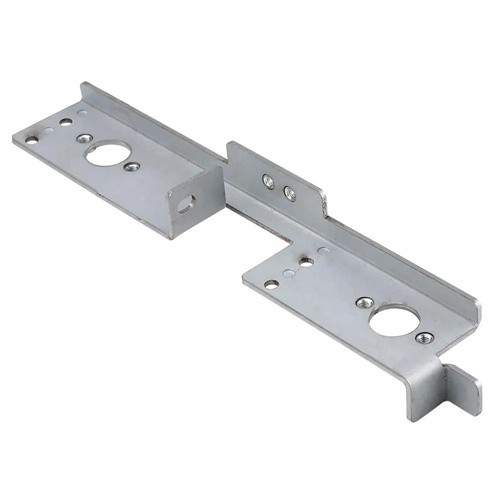Extruded Silicon Bronze Rod
Extruded silicon bronze rod is a copper-based bronze bar containing 2.5%-4.0% silicon. Produced through a hot extrusion process, it offers high strength, excellent corrosion resistance, and superior weldability. It is widely used in shipbuilding, chemical equipment, marine engineering, and other fields. Its diameter typically ranges from 15-200 mm and its length ranges from 3-6 meters. A common grade is QSi3-1 (containing 3.0%-4.0% silicon and 1.0%-1.5% manganese). The addition of silicon significantly enhances the copper’s strength and corrosion resistance, while manganese further improves its mechanical properties and workability.

The production process for extruded silicon bronze rods involves alloy smelting, ingot casting, homogenization, extrusion, heat treatment, and finishing. First, electrolytic copper (purity ≥99.95%), industrial silicon (purity ≥98%), and manganese ingots are smelted in an electric arc furnace at 1150-1200°C. Silicon is added as a master alloy (Cu-Si) to prevent burnout. Electromagnetic stirring ensures uniform composition, with a silicon content tolerance of ≤±0.1% and a manganese content tolerance of ≤±0.05%. Semi-continuous casting is used to produce round ingots with a diameter of 150-250 mm. The cooling rate is controlled at 60-100°C/minute to minimize casting defects. The ingot surface is turned to remove scale and surface defects. Homogenization is performed in a box furnace at 800-850°C for 6-8 hours to ensure full diffusion of the silicon and manganese elements and eliminate compositional segregation. During the extrusion process, the ingot is heated to 750-800°C and extruded into bars using a vertical or horizontal extruder with an extrusion ratio of 10-20 and an extrusion speed of 3-8 m/min. The die is made of heat-resistant alloy to ensure bar dimensional accuracy, with a diameter tolerance of ≤±0.3 mm. Heat treatment utilizes a quenching and tempering process at 850-900°C. After water quenching, the bars are tempered at 400-450°C for 2-3 hours to achieve a uniform tempered bainite structure, ensuring balanced strength and toughness. Finally, straightening, non-destructive testing (ultrasonic testing), and surface cleaning are performed to ensure a straightness of ≤1.5 mm/m and the absence of internal defects.

The performance advantages of extruded silicon bronze rods enable them to perform excellently in corrosive environments. First, the combination of high strength and high toughness, the tensile strength of QSi3-1 silicon bronze rods is ≥500MPa, the yield strength is ≥300MPa, and the elongation after fracture is ≥20%. It can withstand complex loads such as bending and impact, and performs stably in components such as ship propeller shafts; second, excellent corrosion resistance, the corrosion rate in seawater, fresh water, steam and various chemical media is ≤0.008mm/year, which is much lower than carbon steel and ordinary brass, and the service life in the marine environment can reach more than 20 years; third, good welding performance, arc welding, argon arc welding and other methods can be used for welding, the weld strength is ≥85% of the parent material strength, and no complex heat treatment is required after welding to maintain corrosion resistance; fourth, excellent wear resistance, Brinell hardness ≥140HB, and the wear resistance is 2-3 times higher than that of pure copper under sliding friction conditions. times, suitable for making bearings, sleeves and other wear-resistant parts; fifthly, it has good processing performance and can be processed by cutting, forging, stamping and other processes. The cutting efficiency is 20% higher than that of high carbon steel, suitable for making mechanical parts with complex shapes.

Extruded silicon bronze rods are a key material in the marine and chemical industries. In shipbuilding, QSi3-1 silicon bronze rods with diameters of 100-200 mm are used in marine propeller shafts and tail shaft sleeves to resist seawater corrosion and sediment wear. In chemical equipment, reactor agitator shafts and valve spools use silicon bronze rods with diameters of 50-150 mm to withstand corrosion from acidic and alkaline media. In marine engineering, offshore platform mooring chain fittings and seawater cooling pipe flanges utilize silicon bronze rods with diameters of 80-180 mm to withstand long-term immersion in seawater. In hydraulic engineering, turbine sleeves and bearings utilize silicon bronze rods with diameters of 30-80 mm to resist water erosion and cavitation corrosion. In machinery manufacturing, high-pressure pump pistons and piston rods utilize silicon bronze rods with diameters of 20-50 mm for both strength and corrosion resistance.

Industry trends indicate that extruded silicon bronze rods are moving toward high performance, large-scale production, and low cost. By optimizing the silicon and manganese content and adding trace amounts of zirconium and titanium, high-performance silicon bronze rods achieve a tensile strength exceeding 550 MPa while maintaining excellent ductility. Breakthroughs in large-scale extrusion technology enable the production of large-format rods with diameters exceeding 200 mm, meeting the needs of large-scale ships and offshore engineering projects. The promotion of low-cost production processes, utilizing recycled copper (purity ≥99.5%) and a continuous casting-extrusion process, has reduced production costs by 15%-20%. Furthermore, intelligent production technologies are being applied, using numerical simulation to optimize extrusion parameters to ensure consistent product performance. Green manufacturing processes are being further developed, reducing environmental pollution during the production process through waste gas recovery and waste residue utilization. In the future, with the development of marine development and the chemical industry, demand for corrosion-resistant, high-strength extruded silicon bronze rods will continue to grow, driving greater progress in material research and development and process innovation within the industry.
